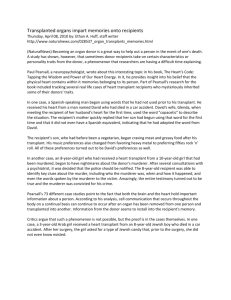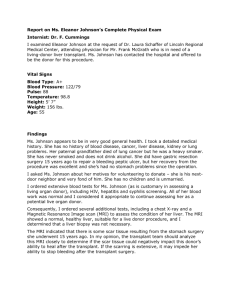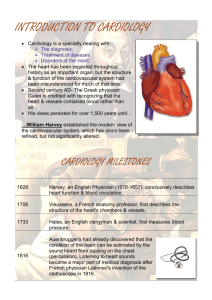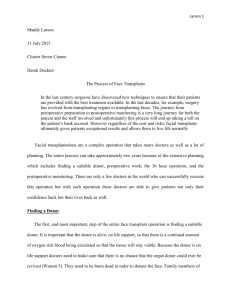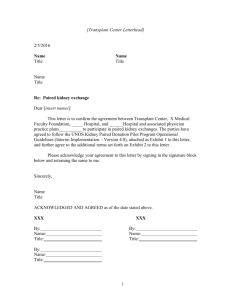“Our faces are more than visages to be adorned or veiled
advertisement
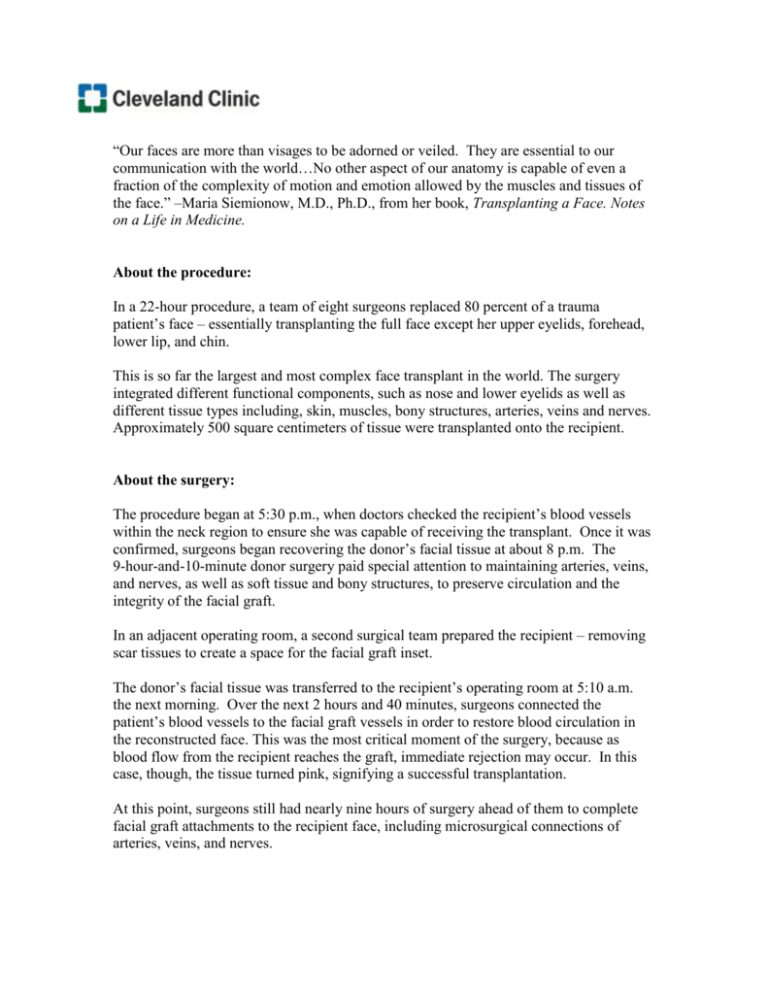
“Our faces are more than visages to be adorned or veiled. They are essential to our communication with the world…No other aspect of our anatomy is capable of even a fraction of the complexity of motion and emotion allowed by the muscles and tissues of the face.” –Maria Siemionow, M.D., Ph.D., from her book, Transplanting a Face. Notes on a Life in Medicine. About the procedure: In a 22-hour procedure, a team of eight surgeons replaced 80 percent of a trauma patient’s face – essentially transplanting the full face except her upper eyelids, forehead, lower lip, and chin. This is so far the largest and most complex face transplant in the world. The surgery integrated different functional components, such as nose and lower eyelids as well as different tissue types including, skin, muscles, bony structures, arteries, veins and nerves. Approximately 500 square centimeters of tissue were transplanted onto the recipient. About the surgery: The procedure began at 5:30 p.m., when doctors checked the recipient’s blood vessels within the neck region to ensure she was capable of receiving the transplant. Once it was confirmed, surgeons began recovering the donor’s facial tissue at about 8 p.m. The 9-hour-and-10-minute donor surgery paid special attention to maintaining arteries, veins, and nerves, as well as soft tissue and bony structures, to preserve circulation and the integrity of the facial graft. In an adjacent operating room, a second surgical team prepared the recipient – removing scar tissues to create a space for the facial graft inset. The donor’s facial tissue was transferred to the recipient’s operating room at 5:10 a.m. the next morning. Over the next 2 hours and 40 minutes, surgeons connected the patient’s blood vessels to the facial graft vessels in order to restore blood circulation in the reconstructed face. This was the most critical moment of the surgery, because as blood flow from the recipient reaches the graft, immediate rejection may occur. In this case, though, the tissue turned pink, signifying a successful transplantation. At this point, surgeons still had nearly nine hours of surgery ahead of them to complete facial graft attachments to the recipient face, including microsurgical connections of arteries, veins, and nerves. During the entire transplantation procedure, surgeons rotated turns at the operating table to rest, to sleep, or to share expertise. By 4:30 p.m., the recipient was wheeled out of the operating room in stable condition. The patient: The recipient, who wishes to remain anonymous, is a woman who had suffered severe facial trauma. She had no nose and no palate after her injury. She was unable to eat or breathe on her own, without a tracheostomy, and was missing bone support. Clinic doctors have been treating her for several years, and she has undergone several reconstructive procedures; however, none of the available, conventional treatment options could restore her facial function. After the transplant, the expectation is that the patient will be able to eat, speak, and breathe normally again. Questions and Answers: Q: What are the ethical concerns of a face transplant? A: The surgery is not without serious risks, including rejection of the tissue, and a lifelong commitment to immunosuppressing medications, which can lead to infection and other diseases. Some experts question the value of such risk, considering that facial disfigurement is not a life-threatening situation. However, Siemionow said, facial disfigurement is life-altering, affecting a person’s quality of life. Many people with facial disfigurement become recluses, choosing not to be exposed to a public that will stare, taunt, or react with fear. Q: Who is a good candidate for a face transplant? A: Candidates must demonstrate strong psychological stability, resiliency, responsibility, and self reliance. They must have exhausted all other possible approaches to correct function and disfigurement. And they must have enough healthy skin elsewhere on their bodies to serve as a skin graft if the transplant is rejected. Q: What is the risk of the recipient’s immune system rejecting her new face? A: Every patient has an episode of rejection, which may manifest itself as a change in color, patchiness, swelling, or redness. If caught quickly, the rejection can be tamed by making changes to the immunosuppressive medication. The patient will take immunosuppressing, anti-rejection drugs similar to those used in organ transplant patients, for the rest of her life. Q: Cleveland Clinic first approved the face transplant protocol in 2004. Why has it taken until now to perform the surgery? A: Finding both a proper candidate, as well as donor, is difficult. Matches need to be made with the recipient’s gender, race, approximate age, and blood type. Even when a match is found, the donor family needs to be willing to donate facial tissue, which would rule out anyone planning on having an open-casket funeral. Q: What if the transplant fails? A: The transplant would be replaced with a skin graft taken from different parts of the patient’s body. Q: What should the patient expect over the next year? A: The swelling is expected to subside in a couple of months. Within about six months, feeling should return to her face. And within about a year, function should return to most of her face. Q: Will the patient look like the donor? A: No. Even though some bone was transferred from the donor to the recipient, the underlying facial structure of any two people is very different. Plus, a person’s identity is more than skin and bones, relying on expression, animation, and social interaction.
